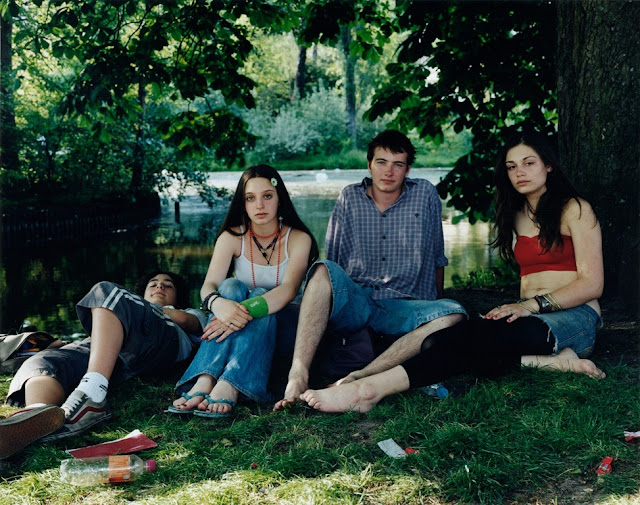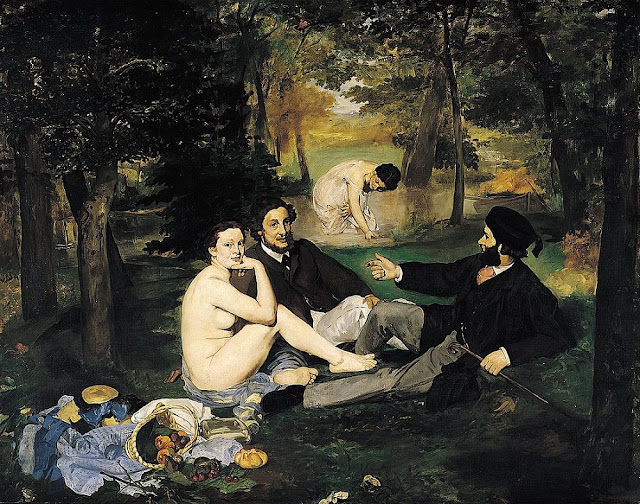 |
| "Vondelpark, Amsterdam the Netherlands" by Rineke Dijkstra. Chromogenic print, June 10, 2005. (via) |
 |
| "Le déjeuner sur l'herbe", or, "The Luncheon on the Grass" by Edouard Manet. Oil on canvas, 1863. (via) |
When I first saw this picture I was struck with its similarity to Manet's "Luncheon on the Grass" (in composition, not Manet's cheeky and groundbreaking social commentary). The clothing and open frankness of the subjects give me aches of nostalgia. I am so glad that this photo exists.
When I went scouting for more information about this picture, I found some really cool insights into Dijkstra's lighting, method and composition from the photographer herself! The following is an excerpt from her interview with Art Practical in which she discusses the photo below (another in her series of Vondelpark group portraits):
 |
| "Vondelpark, Amsterdam, the Netherlands" by Rineke Dijkstra. Chromogenic print, June 19, 2005 (via) |
Interviewer:
PM: It’s amazing how much light becomes a character or an attribute of your characters.
RD: I’m much more precise now. In some of the beach portraits, there’s a flash. And here, I try to keep the natural light and just use a fill-in. So I’m pretty precise in trying to get that [atmosphere]. You don’t really feel the flash so much here, do you?
PM: No, you don’t. In the beach portraits, the light is so stark, almost like a barricade. In encountering the figure, you have to also confront the light. Whereas here, it’s more …
RD: Here, it’s much more like [the subject becomes] one with the landscape.
PM: This is where painting comes to mind, especially Manet’s Le déjeuner sur l’herbe.
RD: Yes, she’s sitting the same way. It’s a total coincidence.
PM: So you didn’t construct this composition?
RD: No. And when I took this picture, I was quite relaxed because it was the first day that I decided to take some pictures. It was a warm day, on a Friday afternoon, and I was walking around with my camera and an assistant. It was really crowded in the park and these kids were just sitting there. I thought, “Let’s see if we can do something,” and it was funny because they were not very interested.
PM: Do you ever find it difficult to approach subjects? Do you ever get nervous about it, or are you just used to it by now?
RD: I’m used to it, and I feel that people also like it. They’re flattered. For instance, for [Vondelpark, Amsterdam, the Netherlands, June 19, 2005], there was this family in the park: this girl and two of her sisters, who were much younger than her, and their mother. The girl was really surprised that I was interested in her. They thought I wanted to photograph the baby. What I like so much is that because her dress is red—can you imagine if this dress had been black or green?—all the attention goes to her, and he is sort of admiring her. If it was the opposite, if she was wearing black and he red, that would have been a totally different picture.
PM: It’s so different from the schoolboy. Even though she’s framed by the foliage, she’s just completely open, and she owns it.
RD: Yeah, it is her picture.

No comments:
Post a Comment